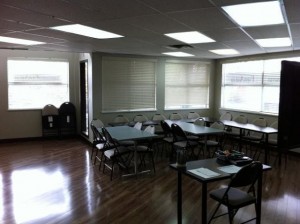Traffic incidents are very common these days as our
roads get busier and busier. Most people will have driven past the scene of an accident, some may have even witnessed an incident or helped out, or maybe be been involved in an incident yourself? Whatever your experience, learning what to do in First Aid Classes can help protect, yourself and others.
Firstly, it is important to recognise the serious risks associated with traffic incidents, mainly due to other passing traffic. workplace approved Training teaches that first and foremost it is vital you make the area safe in order to protect yourself, as well as the casualty and other road users. If you get hurt, who else can help!?
So how do you make the area safe?
Firstly, park your own vehicle away from the incident site, and put your hazard lights on. Never run across a busy motorway or road, and at night make sure you can be seen. Wear or carry something light or reflective, or use a torch.
It is a good idea to ask bystanders to warn other drivers to slow down. Saskatoon First Aid First Aid manual says you should use warning triangles to notify other drivers and these should be positioned 45m (49yards) from the site in each direction.
If possible, you should turn the ignition off on any damaged vehicle, even better disconnect the battery, and switch off the fuel supply on diesel engines if you know how and are able to.
An upright vehicle should be placed into gear and the handbrake applied, or place blocks in front of the wheels to prevent it moving. If the vehicle is on its side, try to prevent it from rolling over.
Other dangers can include damaged power lines, spilt fuel or any incident involving vehicles with hazardous substance symbols. No one should smoke near the incident area, and the emergency services should be notified of any of these dangers.
Once the area is safe, you can then assess the patient(s) and prioritise treatment as taught in First Aid Classes.
Always treat those with any life-threatening injuries first, such as patients with severe wounds or burns. You should check the surrounding area carefully, as there may be patients who have been thrown from vehicles or who may have wandered away in a confused state.
 If possible, always treat the patients where you find them. Unless they are in immediate danger, workplace approved Training says do not attempt to try to move them as this could cause or worsen severe injuries, such as spinal damage. You should always assume there could be a spinal injury in traffic incidents as there are often abnormal forces inflicted on the body. You should support the patients head between your hands to prevent movement until emergency assistance arrives. If there are bystanders available to help, ask them to support the patients head whilst you continue to assess for any further injuries.
If possible, always treat the patients where you find them. Unless they are in immediate danger, workplace approved Training says do not attempt to try to move them as this could cause or worsen severe injuries, such as spinal damage. You should always assume there could be a spinal injury in traffic incidents as there are often abnormal forces inflicted on the body. You should support the patients head between your hands to prevent movement until emergency assistance arrives. If there are bystanders available to help, ask them to support the patients head whilst you continue to assess for any further injuries.
If a patient is trapped inside or under a vehicle, make sure that fire and rescue services are also called when telephoning for emergency assistance.
REFERENCES
First Aid Manual (The Authorised Manual of St. John Ambulance, St Andrew’s Ambulance Association and the British workplace approved), 2006.

